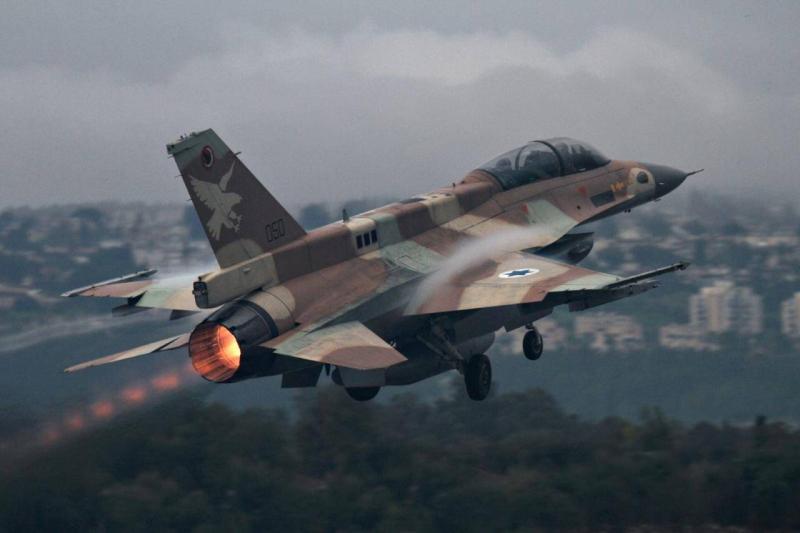Although Israeli airstrikes on military sites in Syria are not new, the recent escalation in attacks since the Gaza war has a different character in terms of objectives and how they are being achieved on the ground. A Syrian military airbase in southern Syria was bombed, attributed to Israel, alongside strikes targeting military sites around the capital, Damascus. These incidents followed the killing of senior Iranian Revolutionary Guard commander Razi Mousavi just three days earlier. Mousavi was reportedly killed by three missiles that Tehran claims were "Israeli," which targeted his home in the Sayyida Zeinab area of rural Damascus. He is considered responsible for coordinating the transfer of Iranian arms into Syria, and subsequently to Hezbollah in Lebanon, according to intersecting Israeli and Iranian sources. He is also described by Hebrew media, including Yedioth Ahronoth, as "the link between the Iranians and Hezbollah, and responsible for supplying drones that Iranian-aligned factions in Iraq and Syria attempt to send to Israel."
**What’s New From Israel?**
Regional military sources mentioned that the intensification of Israeli airstrikes in Syria is linked to "efforts that Tehran is rapidly pursuing," stating that "the latter is increasing its efforts to supply Syria with air defense systems that could reduce the effectiveness of the strikes." The Iranian goal "is connected to the calculations regarding the Gaza war in case the conflict expands there," according to the unnamed sources cited by the agency. They continued: "The intensive Israeli campaign aims to disrupt Syrian air defense systems, which Iran played a role in expanding."
Yedioth Ahronoth, in an analytical article, pointed out that "Iran is working to accelerate the transfer of precision weapons to Hezbollah in preparation for a large-scale conflict in the north." "In contrast to the Americans, who support Israel, Iran is hastening the delivery of missiles and munitions through Syria to its proxy, Hezbollah," wrote Israeli military analyst and article author Ron Ben-Yishai. Iran is also attempting to transfer systems to defend against Israeli helicopters and drones that Hezbollah already uses, known as the "Product 358" missiles. These missiles (358) were recently used by Hezbollah against an Israeli drone, as mentioned in the analytical piece, and were also employed by the Houthis in Yemen to down the American drone over the Red Sea. They are of Iranian manufacture and can be likened to "the drone used for air defense purposes."
**"A Shadow Missile War"**
Since the Gaza war, Israel has focused its strikes in Syria on the international airports of Damascus and Aleppo, and continues to keep them out of operation, with Hebrew media frequently noting that these facilities are used by Iran to transport weapon shipments. In the meantime, Iran’s interest in transferring missiles to Hezbollah and air defense systems is not new, as these efforts have received much attention in the past, often met by Israeli airstrikes, under the war it leads "in the shadows." Researcher Dia Qaddour, who closely follows Iranian activities in Syria, explains that "the Iranian 358 missiles are slow and do not resemble any missile from air defense systems." They may target "reconnaissance drones but are practically ineffective in countering Israeli planes." Qaddour discusses Iranian work that began years ago to support Hezbollah with air defense systems, as well as the Assad regime in Syria. He points out that "Tehran's goal is primarily linked to establishing an independent air defense network outside the Syrian defense networks managed by the Russians."
Ron Ben-Yishai in Yedioth Ahronoth states that Israel disrupts Iran's attempts to deploy missiles in Syria, especially at the military airport in the capital, Damascus, where shipments occasionally arrive. "The intercepting missiles that the Iranians call 358 and are referred to in the West and Israel as SA-67 are directed against low-flying aircraft, helicopters, drones, and short-range missiles," according to Ben-Yishai. He notes that "Iran has indeed equipped Hezbollah with a significant quantity of them, and they are now launching them at Israeli drones operating in Lebanon."
**What is "358" Missile?**
Hezbollah's current capabilities to engage aerial targets are limited to short-range anti-aircraft guns and portable air defense systems such as the Russian-made "Strela-3" and "Igla-1." According to an analysis by the Washington Institute, it also employs the Iranian "Mithaq" system (a version of the Chinese missile "QW-1") and is often referenced as defense missiles labeled "Product 358." The American institute's analysis indicates that the Iranian regime has sought to complicate Israel's aerial operations in a broad area extending from its western borders to Lebanon by attempting to carry out arms transfers to Iraq and Syria or planning such operations. It has been noted since 2018 that Iran has deliberately been transferring "Product 358" air defense cruise missiles not only to Hezbollah but also to Iraqi militias and even to the Yemeni Houthis. It is likely that this jet-powered weapon was used during an incident on November 8 when the Houthis shot down an American MQ-9 drone over Yemeni waters. The "358" features an infrared receiver, "making it effective as it is difficult to jam or counteract against it." The Iranians have offered it to the Houthis in different versions, and it was utilized in the incident involving the recent American drone and a Chinese-made drone operated by the Saudi-led coalition before that. While it can down helicopters and drones for which it is designed, it cannot effectively engage jet fighters, as Haines confirms.
**Syria: The Cornerstone**
The outcome of the repeated airstrikes on Syria remains uncertain, as does the incident involving Mousavi's death, a prominent commander of the Iranian Revolutionary Guard. According to Israeli military experts quoted by Reuters, these strikes are part of an escalation of a low-intensity conflict aimed at slowing Iran's increasing entrenchment in Syria. Syria serves as a transit point for arms and munitions to Hezbollah in Lebanon, and Israelis have long discussed land, aerial, and maritime routes to achieve this goal.




